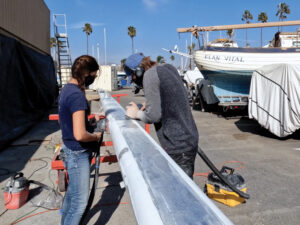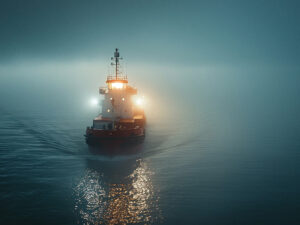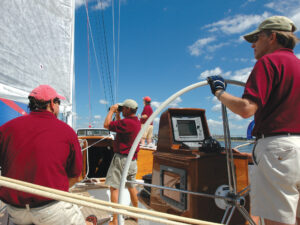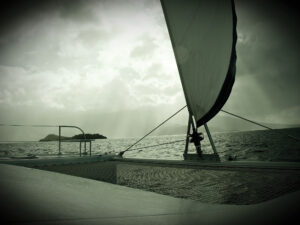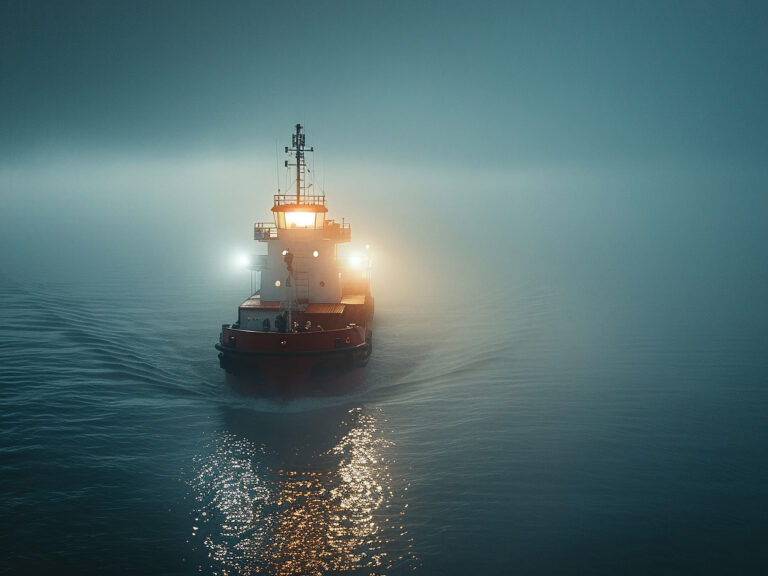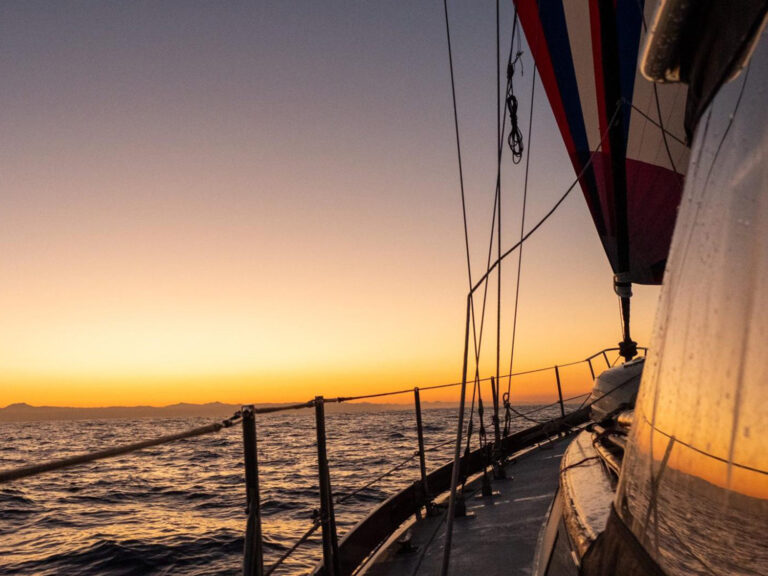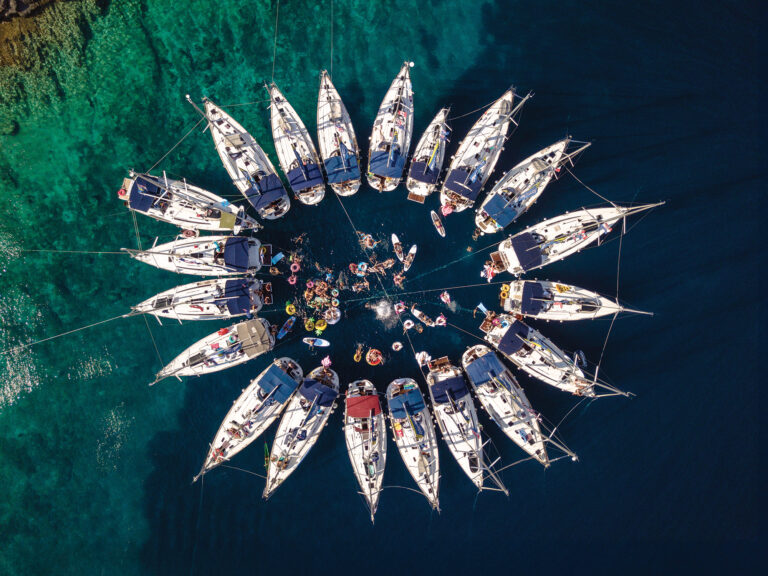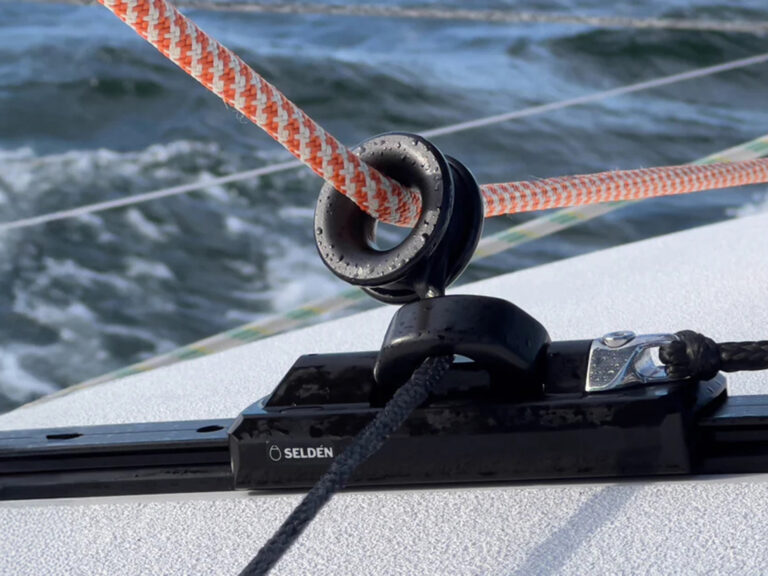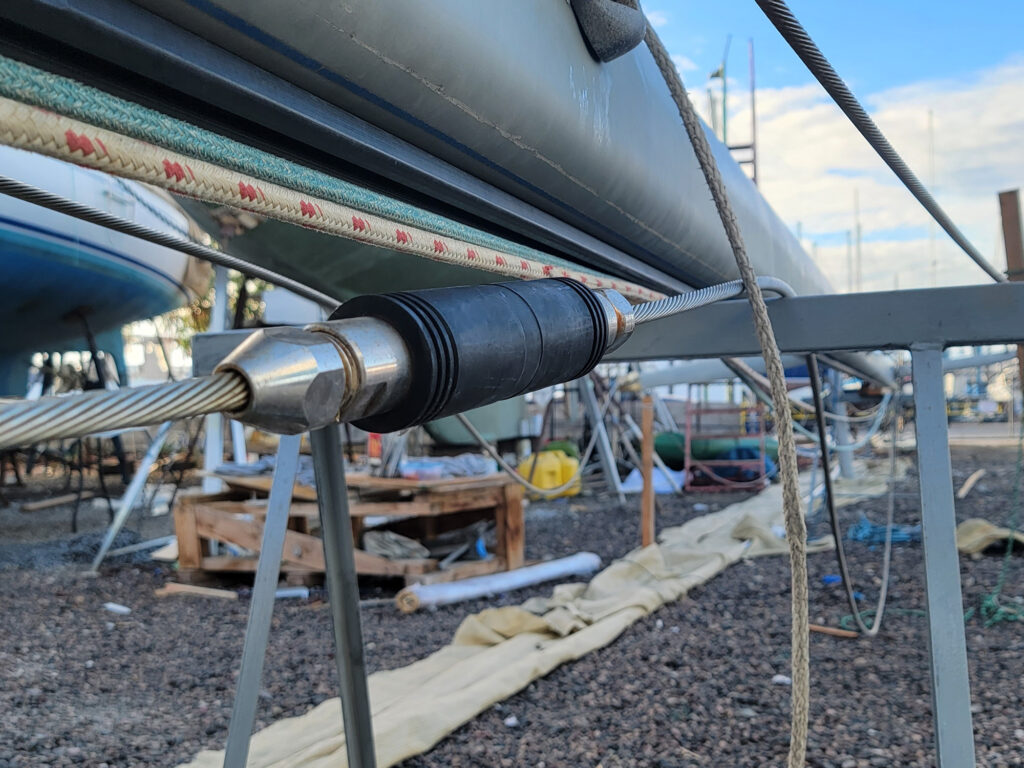
Updating the standing rigging on our Stevens 47, Totem, wasn’t an intentional part of the 40-year refit that we recently completed. We had re-rigged in 2019, anticipating our departure to the South Pacific in spring 2020. The pandemic scratched that, and we embarked on a significant refit in 2021 that instead left this rig on saw horses for a year and a half.
Putting the rig back up was among the last tasks during our extended stay at Cabrales Boatyard in Puerto Peñasco, Mexico. As we neared mast-stepping day in November 2023, my husband, Jamie, busted out his rigging kit. That’s how we refer to the 10X loupe that serves as the key for scrutinizing components at a level that human eyes just can’t do without magnification.
Some halyards showed age and wear, but we already knew this and had a replacement Dyneema/polyester double braid replacement line on hand. The one surprise? Totem’s backstay.
Our Backstay’s Weak Link
New in 2019, the wire still looked fine, as did the swages. But two Sta-Lok insulators on the backstay—an assembly that enables that aft wire to be used as an antenna for single sideband radio—didn’t. Surface crazing on the black nylon portion of the insulators, which were added in 2008, suggested ultraviolet degradation.
During our 2019 rerig, we chose to reuse the backstay insulators. The fittings inspected well. Some people consider mechanical rigging terminals such as Sta-Lok, Hayn Hi-MOD and Norseman to be indefinitely reusable. They’re not. Jamie considers their lifespan at two rigging cycles (or about 20 years) maximum. Our old insulators met safe criteria, so we saved money by keeping them.
Still, we knew to look out for trouble. In the past few years, friends on two different cruising boats had rig failures due to broken insulators. Both crews practice good seamanship and don’t skimp on safety. Melissa White has written about losing the backstay on Galapagos (in her blog, Little Cunning Plan, and also in 48°N magazine), three weeks into a passage from Hawaii to the Pacific Northwest. With only 500 nautical miles to Cape Flattery, Washington, their insulator snapped in half in the rolling swells of the North Pacific Ocean. They were in conditions that allowed them to stabilize the rig, and they altered course to a closer point of landfall.
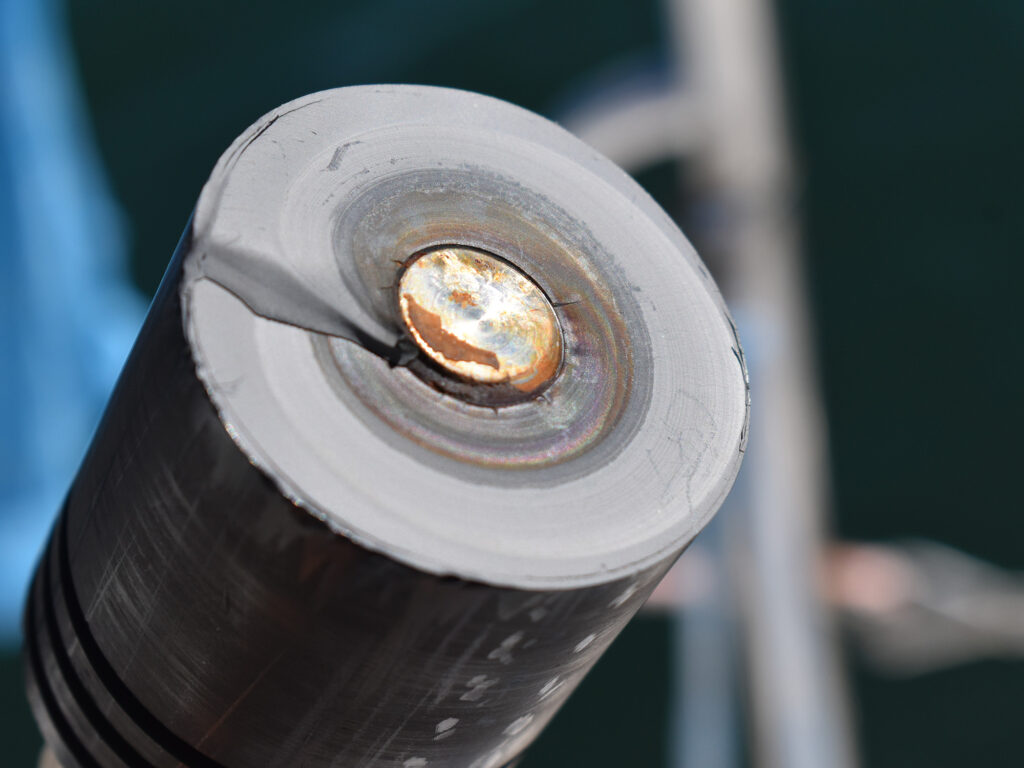
The crew of Miles wasn’t so lucky: When their insulator failed, their rig came down. Never mind the fact that they’d had a rigging inspection only months before, and no faults had been found.
When they dismasted, they were in degrading conditions approximately 100 miles east of Eleuthera, Bahamas. In an admirable effort, they secured the wreckage and bashed overnight to the nearest safe harbor in San Salvador.
So, Jamie took another look at our setup last November, and he condemned Totem’s insulator. The conclusion was easy, but the decision about next steps was not.
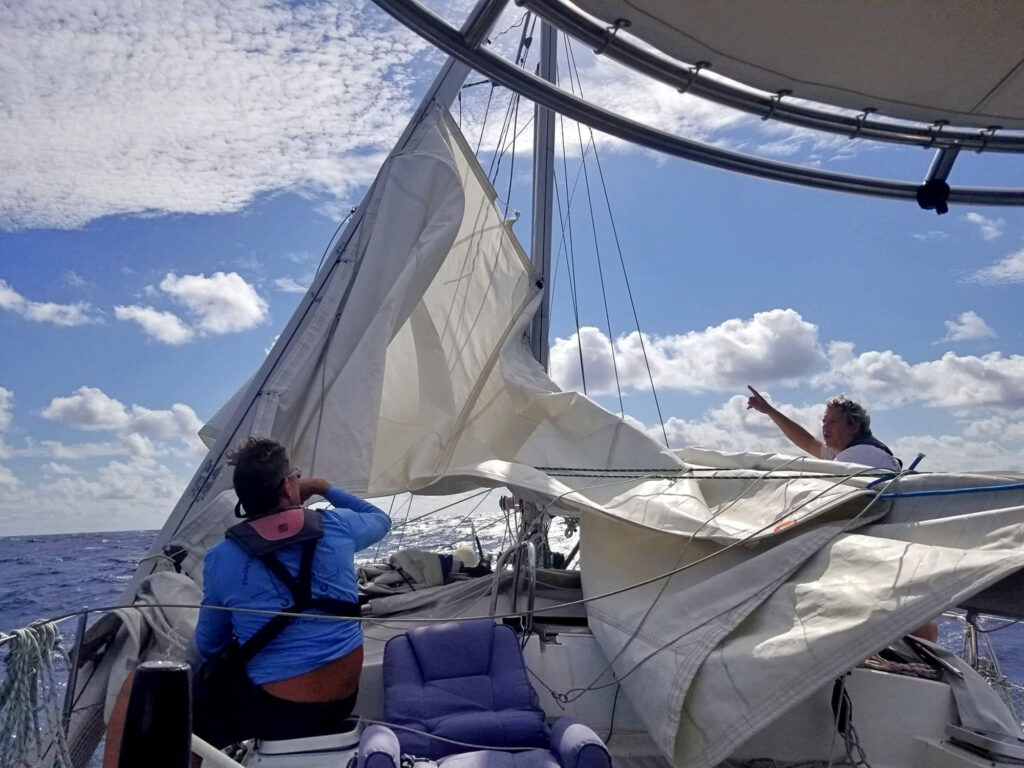
We were days from putting Totem back in the water, looking for a weather window to sail south. Five family members were flying to meet us in a bay 800 nautical miles south of the boatyard. Any delay in stepping would make us late for the family Christmas. Could we get to Puerto Vallarta with the existing backstay, or could the rig be compromised on our trip south?
And, in the time between putting insulators on the new rig in 2019 and wrapping an extensive refit in 2023, we had changed our stance on single sideband use. Once our only offshore communication, the hardware no longer earned a place on Totem because multiple satellite options are available today. Since we weren’t installing the SSB, we didn’t need new insulators. This opened options to consider in replacing the backstay.
One of those options was Dyneema, which is a strong, lightweight line made from synthetic ultra-high molecular weight polyethylene fibers. Dynex Dux is Dyneema that’s put through another cycle of heating and stretching to get every fiber in every yarn bundle to be exactly the same length. It’s lightweight, super strong and has virtually no stretch, making it a great alternative to wire for rigging.
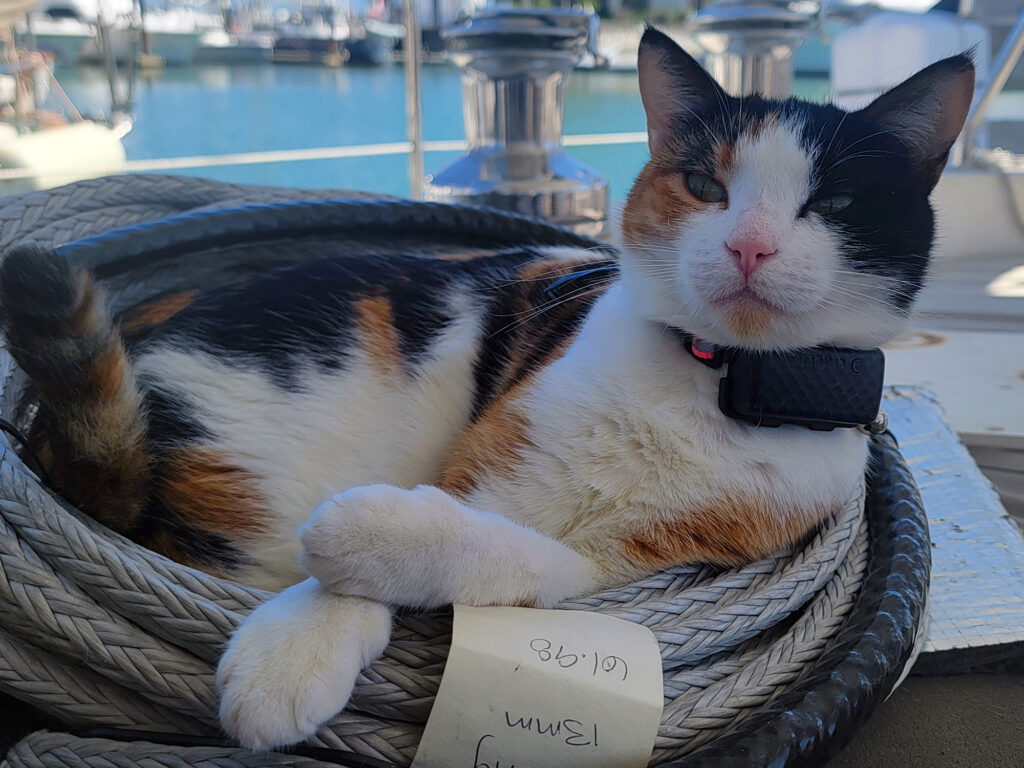
We knew this because in 2008, Jamie had installed a Dynex Dux solent stay and inner forestay on Totem. He had also installed a Dux backstay on a friend’s boat in Puerto Rico in 2017, and loved the results.
With Totem now our focus, we reached out to Colligo Marine, the US distributor for Dynex Dux, rebranded as Colligo Dux. Colligo’s founder, co-owner and lead engineer, John Franta, helped us. Picking up the backstay became a perfect excuse for us to drive to Southern California for Thanksgiving with cousins. (Shipping into Mexico is fraught with issues.) Barely a week later, we were on our way back to Mexico with the new backstay in hand.
Shifting forward a few weeks, Totem was in Banderas Bay in time for family Christmas, after a conservative sail south with the old backstay in place. The new one was installed in the slip at Marina Riviera Nayarit. The hardest part of replacing the backstay with the mast up? Detaching and lowering the old backstay, because it was so heavy. The new stay was in place minutes later.
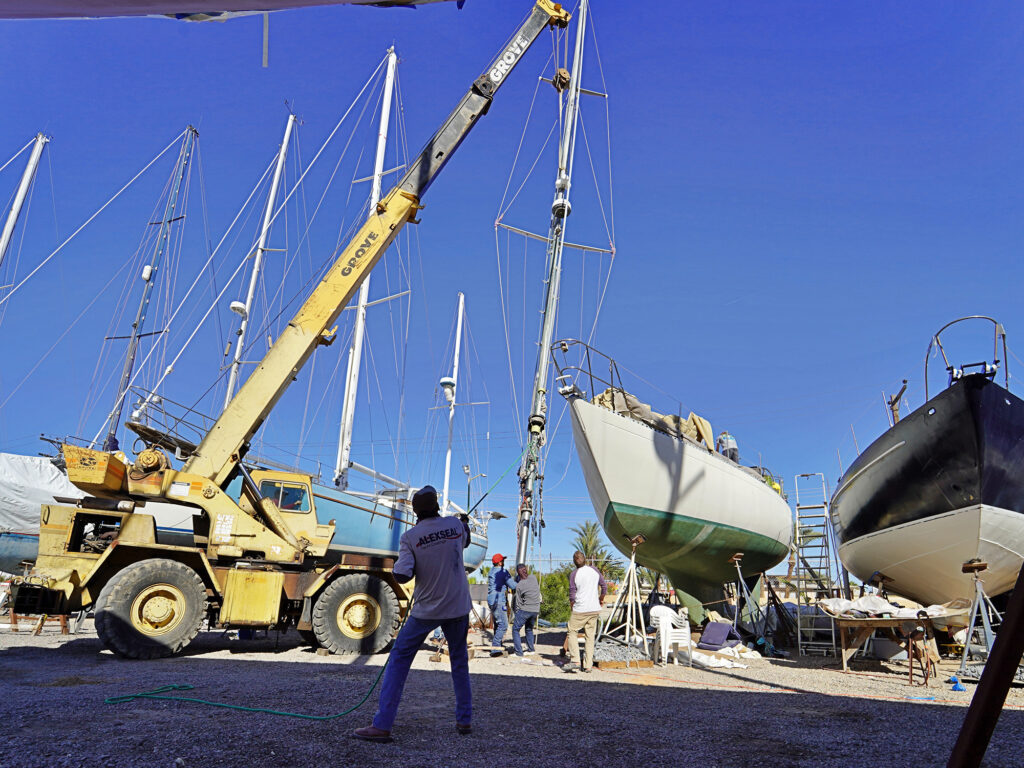
Wire vs. Synthetic Rigging
If Dux is so great, why didn’t we replace all of our standing rigging with it back in 2019?
Well, we did think about it. At the time, Jamie chose wire because of the cost of additional hardware necessary in the shift to synthetic rigging. We simply didn’t have the resources to consider the upgrade.
There are other considerations for a switch to synthetic rigging, too. They include abrasion, chafe, ultraviolet longevity and thermal expansion. Stainless steel wire has just as many issues and is harder to inspect well. Our new backstay was an easy choice this time around because of the weight savings, ease of installation and absence of chafe points.
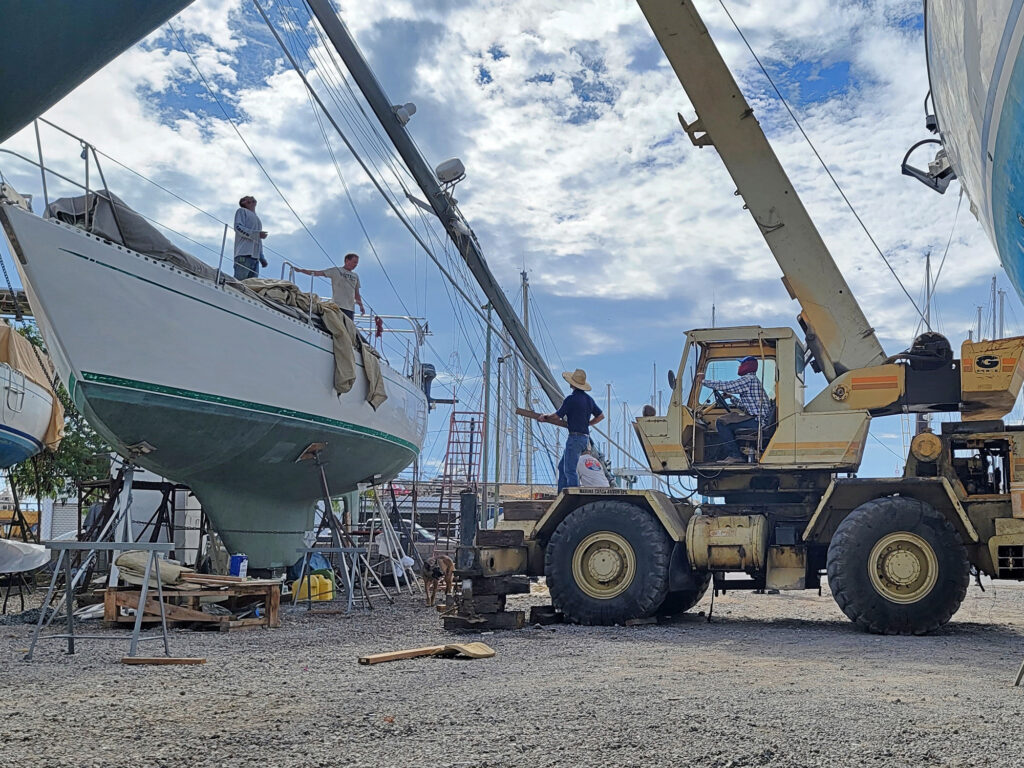
We’re now getting ready to sail around 2,000 nautical miles from Hawaii to Micronesia. We aren’t sure yet if we’ll make landfall in Tarawa, Kiribati, or sail the slightly shorter distance to Majuro, Marshall Islands. Ideally, we can visit Tarawa first (it’s harder to get there later), but the weather will make the decision for us.
Meanwhile: Totem Talks will be on again before we sail west. For this next free livestream, we’ll have a circumnavigation roundtable with our friend and neighbor here in Hawaii, Dustin Reynolds. He didn’t just circumnavigate: Dustin holds a Guinness World Record for the first solo voyage around the world by a double amputee (arm and leg).Bring your voyaging questions, and sign up to be notified by email for the date of the livestream.

